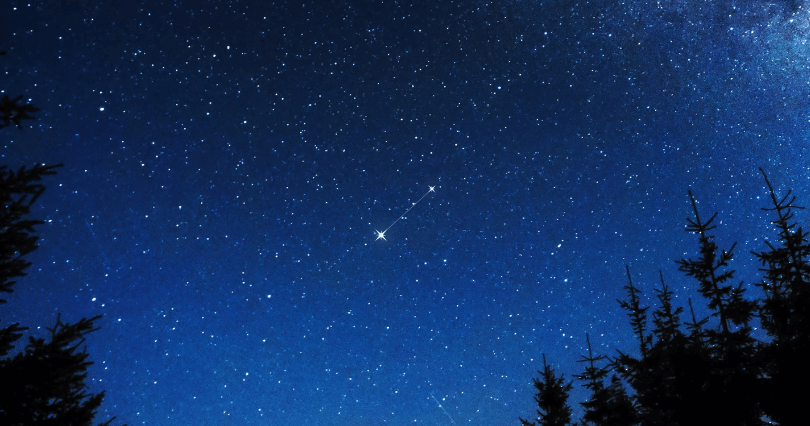
The Canes Venatici Constellation represents the hunting dogs of the neighbouring constellation Boötes, the Herdsman, which are also known as Asterion and Charawhich. Its name means “hunting dogs” in Latin.
It contains contains four named stars. The star names approved by the International Astronomical Union (IAU) are Chara, Cor Caroli, La Superba and Tuiren. There are also four stars with known planets in Canes Venatici.
The brightest star in Canes Venatici is Cor Caroli and it is the only star brighter than magnitude 3.00. There are two stars located within 10 parsecs (32.6 light years) of Earth. The nearest star, DG Canum Venaticorum (spectral class M4.0Ve), is only 25.89 light years distant from Earth.
Canes Venatici contains five Messier objects — M3, the Whirlpool Galaxy, the Sunflower Galaxy, M94 and M106. There is a meteor shower associated with the constellation, the Canes Venaticids, that takes place in January.
History of the Canes Venatici Constellation
Originally, the Greek astronomer Ptolemy included the stars of Canes Venatici in the constellation Ursa Major as informes (unformed stars). The constellation was not introduced until 1687, when the Polish astronomer Johannes Hevelius created it from the faint stars located under the Great Bear’s tail.
In the Middle Ages, Canes Venatici was identified with the two dogs held on a leash by Boötes. This was thanks to a mistake in the translation of Ptolemy’s Almagest from Greek to Arabic.
In Ptolemy’s text, some of the stars in Boötes represent the Herdsman’s club. The translator loosely translated the Greek word for “club” (Κολλοροβος ) as “the spearshaft with a hook” (“al-`aşā dhāt al-kullāb”). When the Arabic phrase he used was later translated to Latin, the translator mistook one of the words for kilāb, which means “dogs.”
This was when Hevelius decided to define the dogs’ position in the night sky in the 17th century. Hevelius named the northern dog Asterion (“little star” in Greek) and the southern one Chara (“joy”).
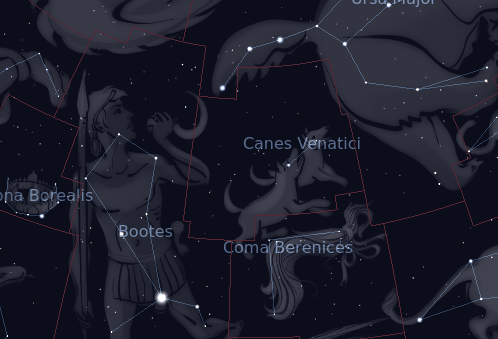
Location of the Canes Venatici Constellation
Canes Venatici is the 38th largest constellation in the sky, occupying an area of 465 square degrees. It is located in the third quadrant of the northern hemisphere (NQ3) and can be seen at latitudes between +90° and -40°.
Its right ascension is 12h 06.2m to 14h 07.3m and its declination is +27.84° to +52.36°. It is best seen at 9pm during the month of May.
Canes Venatici belongs to the Ursa Major family of constellations, along with Boötes, Camelopardalis, Coma Berenices, Corona Borealis, Draco, Leo Minor, Lynx, Ursa Major and Ursa Minor. Aside from Boötes, the other neighboring constellations to Canes Venatici are Coma Berenices, and Ursa Major.
Notable Stars
There are four named stars in the constellation of Canes Venatici and a couple of other notable stars. The stars in this constellation are not bright stars.
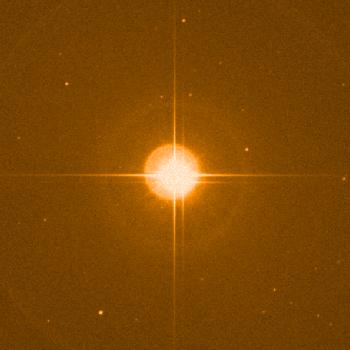
Cor Caroli
Cor Caroli, also known as Alpha Canum Venaticorum, is the brightest star in the constellation of Canes Venatici. The apparent magnitude varies between 2.84 and 2.98 and it is approximately 110 light years away from Earth.
Cor Caroli is a binary star composed of two stars separated by 19.6 arc seconds in the sky. The brighter component is called Alpha-2 CVn and is a chemically peculiar star that belongs to the spectral class A0 and is classified as an Ap/Bp star. This means that it shows an overabundance of certain metals. The star has an unusually strong magnetic field — around 5,000 times as strong as the Earth’s — and its atmosphere has overabundances of europium, mercury and silicon.
The companion star, called Alpha-1 CVn, is an F-type main sequence star with an apparent magnitude of 5.60.
Alpha Canum Venaticorum is part of the Great Diamond (or Diamond of Virgo) asterism, marking its northern vertex. Other stars in the asterism are Denebola in Leo, Spica in Virgo and Arcturus in Boötes.
Its name means “Charles’ heart” and it was named by Sir Charles Scarborough, mathematician and physician to Charles II, in honour of Charles I, the king executed after the English Civil War.
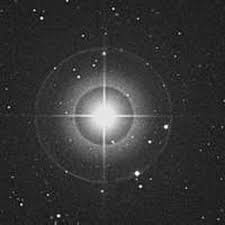
Chara
Chara, also known as Beta Canum Venaticorum, is the second brightest star in Canes Venatici. It is a G-type main sequence dwarf with an apparent magnitude of 4.26. It is approximately 27.4 light years from Earth and is similar to the Sun in terms of age, mass and stage of evolution. Because of this, it has been called a solar analogue or solar twin.
The name Chara, which was originally used for the southern dog, means “joy” in Greek.
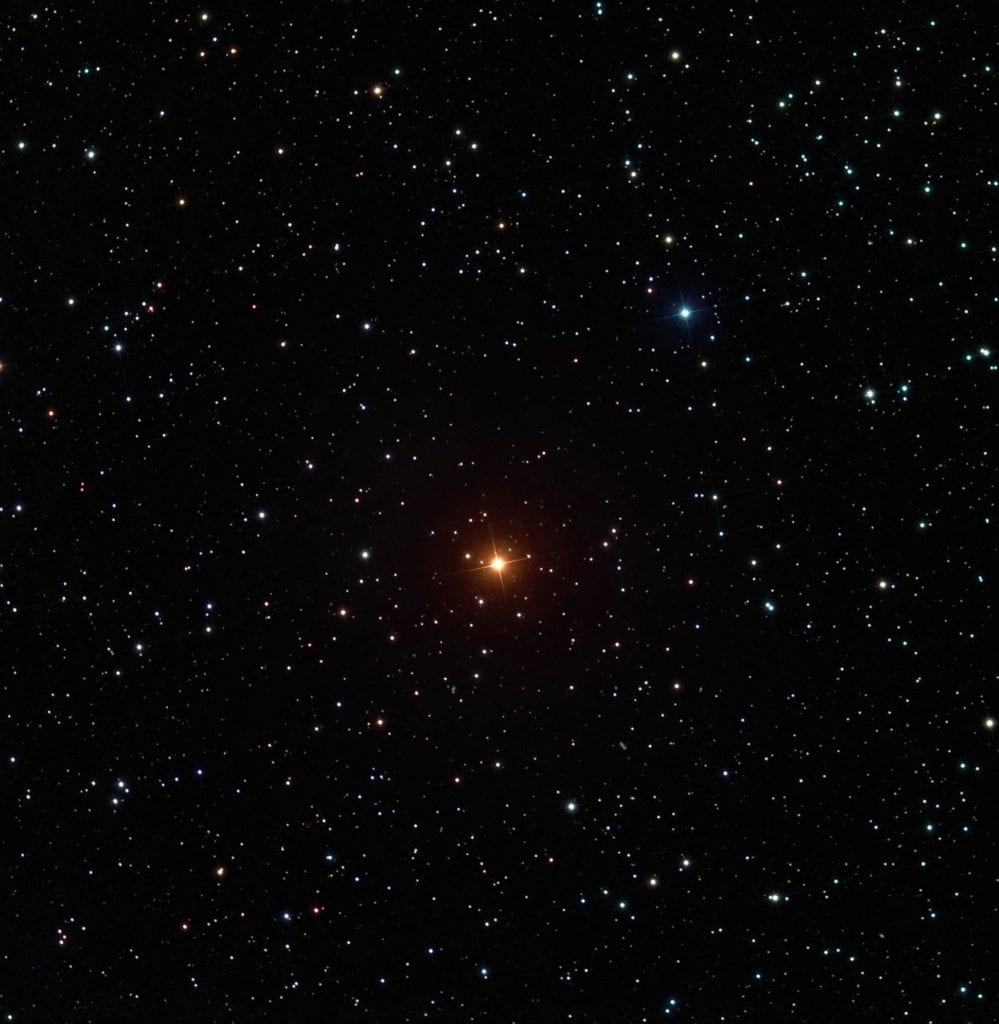
La Superba
La Superba, also known as Gamma Canum Venaticorum, is one of the reddest stars in the sky. It is a semi-regular variable star, with an apparent magnitude varying between 4.8 and 6.3 over a period of 160 days.
La Superba is the brightest J-star known, which means it is a rare carbon star that contains an abundance of carbon-13. It is also actually believed to be in the last stages of fusing its secondary fuel, helium, into carbon. La Superba is losing mass at a relatively fast rate and is surrounded by a disk of ejected material. It is thought that it will eject its outer layers to form a nebula and become a white dwarf.
The star is located about 711 light years from Earth and it was named La Superba by 19th century Italian astronomer Angelo Secchi because of its striking appearance.
AM Canum Venaticorum
AM Canum Venaticorum, also known as AM CVn, is a cataclysmic variable star. These stars are usually are typically binary stars, composed of a white dwarf and a mass transferring secondary star. The gravity of the white dwarf distorts the other star and the white dwarf accretes matter from it. This usually forms an accretion disc around the white dwarf.
The star has an apparent magnitude of 14.18 and is approximately 2,000 light years away from us. AM Canum Venaticorum is also a prototype of a class of variables known as the AM CVn stars.
RS Canum Venaticorum
RS Canum Venaticorum, also known as RS CVn, serves as a prototype for a class of variable stars. The variables are close binary stars with variations in luminosity caused by the stars’ active chromospheres. It normally fluctuates by 0.2 magnitudes in luminosity.
Tuiren
Tuiren, also known as HAT-P-36 is a G-type main-sequence star that is around 1,034 light years away from Earth. Turien has an apparent magnitude of 12.26 and is too faint to be seen with the naked eye. However, it is possible to view it with binoculars or a small telescope.
In 2012, a hot Jupiter-type exoplanet was discovered orbiting Tuiren with an orbital period of about 1.3 Earth days.
Deep Sky Objects
There are a number of deep sky objects in Canes Venatici, including some interesting Messier objects and galaxies.
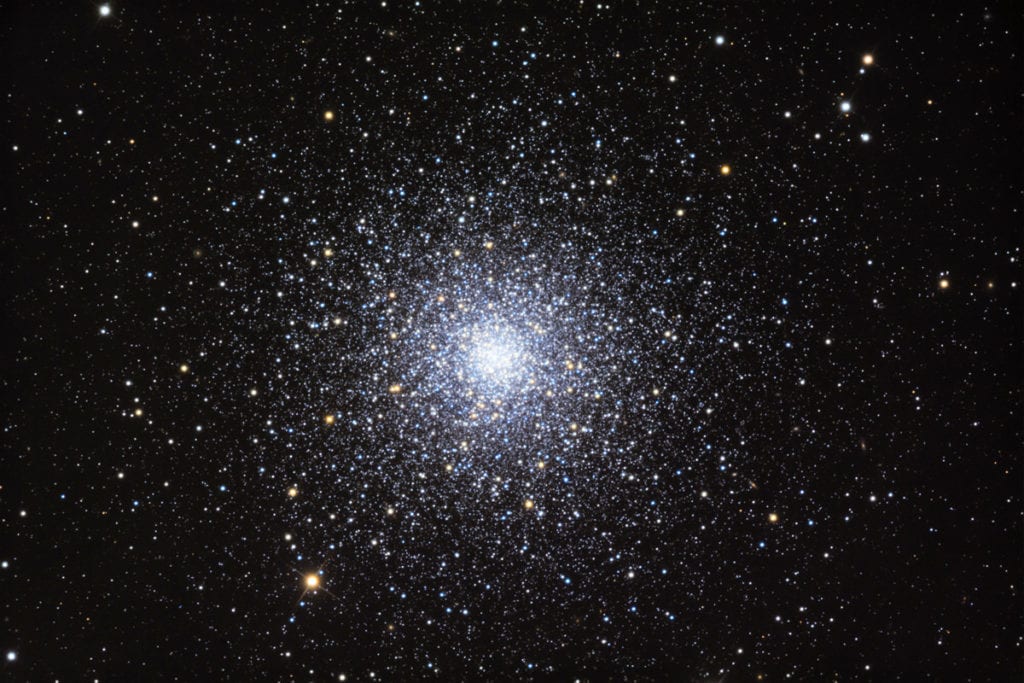
Messier 3
Messier 3, also known as NGC 5272, is a globular cluster with an apparent magnitude of 6.2. It is thought to be about 33,900 light years from Earth and 8 billion years old.
It was discovered by William Herschel in 1784 and is one of the largest, brightest globular clusters known, containing about 500,000 stars.
M51 GROUP
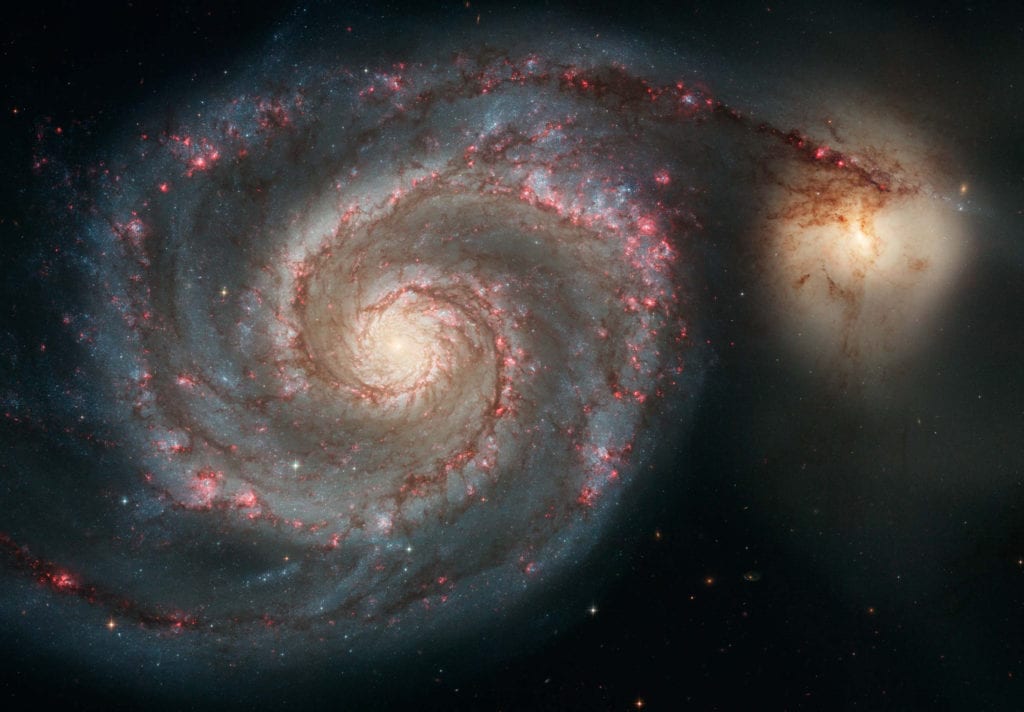
Whirlpool Galaxy
The Whirlpool Galaxy, also known as Messier 51, Messier 51a or NGC 5194, is a member of the M51 group and is one of the best known galaxies in the night sky. It is also the brightest galaxy in the M51 Group. It is a grand design spiral galaxy that has an apparent magnitude of 8.4. The Whirlpool galaxy can be seen without binoculars, including its companion galaxy, NGC 5195 or Messier 51b.
The two galaxies are connected by a tidal bridge which is full of interstellar dust. The dust can be seen silhouetted against the center of the dwarf galaxy. NGC 5195 is highly distorted in shape because of its interaction with the Whirlpool Galaxy.
The Whirlpool Galaxy is located 31 million light years from the Milky Way and has a bright circular disk with a radius of 38,000 light years.
It was first discovered by Charles Messier in 1774, while the dwarf galaxy NGC 5195 was discovered in 1781 by the French astronomer Pierre Méchain.
Sunflower Galaxy
The Sunflower Galaxy, also known as Messier 63 or NGC 5055, is the second brightest member of the M51 Group. It has a magnitude of 9.3 and is approximately 37 million light years from Earth. A supernova was observed in the galaxy in 1971.
The Sunflower Galaxy is a spiral galaxy that was discovered by Pierre Méchain in 1779 and then included in the Messier Catalogue by Charles Messier as M63.
Other M51 Galaxies
There are some other lesser known galaxies in the M51 Group other than the Whirlpool and Sunflower galaxies.
NGC 5023 is a spiral galaxy that is 49,000 light years across and seen edge-on. It is relatively isolated from the rest of the M51 group and located between 17.6 and 26.1 million light years away from the Solar System, but is considered a member nonetheless. It has an apparent magnitude of 12.82.
UGC 8331 is in the M51 Group and is an irregular galaxy between 19.7 and 26.8 million light years distant. It has an apparent magnitude of 14.61.
UGC 8313 is another edge-on spiral galaxy, about 19,000 light years in diameter. It has an apparent magnitude of 14.4 and is believed to be a companion of the Sunflower Galaxy.
Another edge-on spiral galaxy, NGC 5229 is, like NGC 5023, isolated from the rest of the group. It is about 23,000 light years in diameter and has an estimated age is 13.7 billion years. It has an apparent magnitude of 14.3.
Messier 94
Messier 94, also known as NGC 4736, is a spiral galaxy that has an apparent magnitude of 8.99 and is approximately 16 million light years.
This galaxy has a two ring structure. The inner ring is sometimes referred to as the starburst ring and has a diameter of 70’’. It is also a site of strong star formation activity. The outer ring has a diameter of 600’’.
It is one of the brightest galaxies in the M94 Group (Canes Venatici I Group), which contains between 16 and 24 galaxies that all lie within the Virgo Supercluster in the constellations Canes Venatici and Coma Berenices. Other galaxies in the M94 Group include NGC 4214, NGC 4244, NGC 4395, NGC 4449 and UGC 8320.
M94 was discovered by Pierre Méchain and catalogued by Messier.
Messier 106
Messier 106, also known as NGC 4258, is a spiral galaxy and classified as a Seyfert II galaxy — one that has unusual emission lines and emits x-rays. It has an apparent magnitude of 9.1 and is between 22 and 25 million light years away from Earth. It was discovered by Pierre Méchain in 1781.
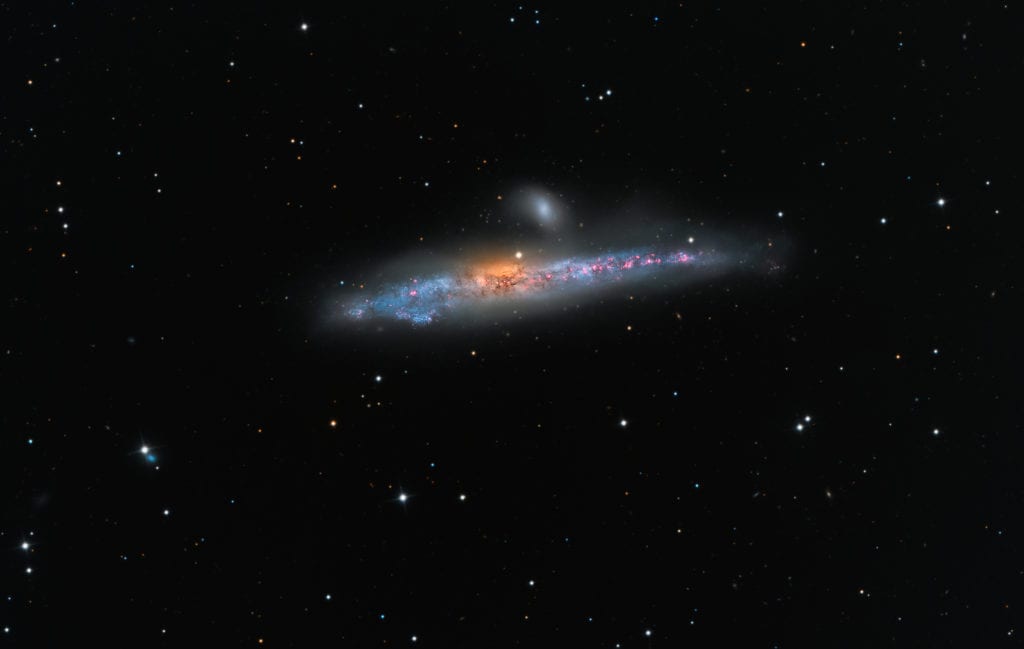
Whale Galaxy
The Whale Galaxy, also known as NGC 4631, Caldwell 32, Arp 281 or PGC 42637, is an edge-on spiral galaxy with an apparent magnitude of 9.8. It is located 30 million light years from Earth and is known for its slightly distorted shape that resembles a whale or a herring, hence its name.
Thanks to the galaxy’s central starburst region and intense star formation, x-ray and spectral line emission is seen in NGC 4631.
NGC 5033
NGC 5033 is a spiral galaxy with an apparent magnitude of 10.8. It is located near to NGC 5005.
The NGC 5033 galaxy appears inclined and has a bright nucleus and a relatively faint disk. It also has a Seyfert nucleus (a type of active galactic nucleus) which is believed to contain a supermassive black hole.
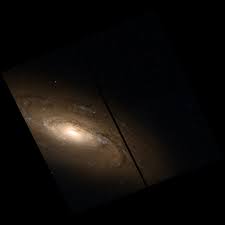
NGC 5005
NGC 5005, also known as Caldwell 29, is an inclined spiral galaxy that is located approximately 65 million light years from Earth. It has a visual magnitude of 10.6 and has a bright nucleus and a bright disk.
It can be observed even in large amateur telescopes. The nucleus also contains an x-ray source.
NGC 4151
NGC 4151 is an intermediate spiral Seyfert galaxy. It has an apparent magnitude of 11.5 and is a known X-ray source.
NGC 4618
NGC 4618, classified as a barred spiral galaxy, has the special distinction amongst other spiral galaxies of only having one arm rotating around the center of the galaxy. It is also a dwarf galaxy and classified as a Sm galaxy. Sometimes it is referred to as a Magellanic spiral and has an apparent magnitude of 11.2.
It is located about 21 million light-years from us and has a diameter of about one third that of the Milky Way. Together with its neighbour, NGC 4625, it forms an interacting galaxy pair, which means that the two galaxies are close enough to influence each other gravitationally.
It was first discovered on 9 April 1787 by the German-British astronomer, Wilhelm Herschel.
NGC 4625
NGC 4625 is a dwarf galaxy that has an asymmetric shape and a single spiral arm. It is classified as a Sm galaxy because its structure somewhat resembles that of a spiral galaxy and it has an apparent magnitude of 13.2. It is located about 30 million light years away from us.
NGC 5371
NGC 5371 is a spiral galaxy that is classified as a Sbc barred spiral galaxy. It makes up the Big Lick Galaxy Group with Hickson Galaxy Group 68. It is located around 100 million light years from Earth.
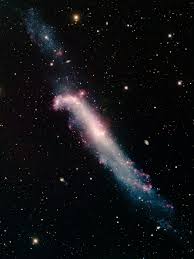
Hockey Stick Galaxies
The Hockey Stick Galaxies, also known as NGC 4656 & NGC 4657, or Crowbar Galaxy, UGC 7907 or PGC 42863, are interacting galaxies that belong to the NGC 4631 Group. They have an apparent magnitude of 11.0 and are located approximately 25 million light years from Earth.
They get their name because they are shaped like an elongated, warped stick, stretching out through space until they curls around at one end to form the shape of a hockey stick. This unusual shape is thought to be due to an interaction between NGC 4656 and a couple of near neighbors — NGC 4631 and NGC 4627.
NGC 4183
NGC 4183 is a spiral galaxy that was discovered by William Herschel on January 14, 1788. It spans around 80,000 light years and is around 55 million light years from Earth.
NGC 4214
NGC 4214 is a dwarf barred irregular galaxy and is also a starburst galaxy, with two vast star-forming regions (NGC 4214-I and NGC 4214-II) found in the galaxy’s center. It has an apparent magnitude of 10.2 and is located around 10 million light years from Earth.
The galaxy occupies an area of 8.4′ by 6.6′ in size and contains two super star clusters, both of which are around 200 million years old.
Dominating much of the galaxy is a huge glowing cloud of hydrogen gas in which new stars are being born. A heart-shaped hollow can be seen at the center and inside this cavity lies a large cluster of massive, young stars ranging in temperature from 10,000 to 50,000 degrees Celsius.
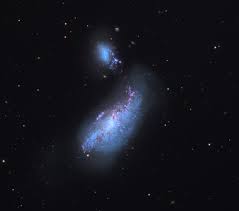
Cocoon Galaxy
The Cocoon Galaxy is a barred spiral galaxy that is located at a distance of 25.1 million light years from Earth and has an apparent magnitude of 9.8. It was discovered by William Herschel in 1788.
The Cocoon Galaxy interacts with a smaller irregular companion, NGC 4485, and is a starburst galaxy as a result. Both of these galaxies have been distorted by the interaction. What’s more, two supernovae have been detected in the galaxy, SN 1982F in 1982 and SN 2008ax in 2008.
IC 883
IC 883, also known as Arp 193, is an irregular galaxy that has a visual magnitude of 13.8 and an apparent size of 2.4’ x 0.7’. It is located around 321 million light years away from Earth and was first discovered by the Austrian astronomer Rudolf Ferdinand Spitaler on May 1, 1891.
The galaxy has twin tidal tails which has led astronomers to believe that it was the remnant of the merger of two disk galaxies.
NGC 4449
NGC 4449 is an irregular galaxy with a visual magnitude of 10. It has an apparent size of 6.2′ x 4.4′ and is located around 12 million light years away from us.
It is part of the M94 Group and is similar in size and brightness to the better known Large Magellanic Cloud (LMC). However, NGC 4449 has twice the rate of star formation than the LMC and is considered a starburst galaxy.
NGC 4449 has a distorted shape as a result of interactions with its neighbours. It is home to several massive young star clusters. NGC 4449 has been forming stars for several billion years, but currently it is experiencing a star formation event at a much higher rate than in the past.
Other Deep Sky Objects
Other deep sky objects in Canes Venatici include:
- Dwarf elliptical galaxy NGC 4627,
- The elliptical galaxy NGC 5223,
- The lenticular galaxy NGC 4138,
- Edge-on spiral galaxies NGC 4244 and NGC 4217,
- The spirals NGC 5002, NGC 5112 and NGC 4534,#
- The dwarf spheroidal galaxies Canes Venatici I and Canes Venatici II.
Images:
- Some Images created with the NightVision app – https://www.nvastro.com/nvj.html
- Some Images created with the Stelvision Sky Map https://www.stelvision.com/en/sky-map/
- Canes Venatici 1 – https://in-the-sky.org/data/
constellation.php?id=14 - Canes Venatici 2 – https://starregistration.
net/constellations/canes- venatici-constellation.html - Cor Caroli – https://nineplanets.org/cor-
caroli/ - Chara – https://www.daviddarling.
info/encyclopedia/C/Chara.html - La Superba – https://apod.nasa.gov/apod/
ap081218.html - Messier 3 – https://www.universetoday.com/
31110/messier-3/ - Whirlpool Galaxy – https://www.nasa.gov/
feature/goddard/2017/messier- 51-the-whirlpool-galaxy/ - Sunflower Galaxy – https://en.wikipedia.org/
wiki/Messier_63 - Whale Galaxy – https://apod.nasa.gov/apod/
ap160603.html - NGC 5005 – https://en.wikipedia.org/
wiki/NGC_5005 - Hockey Stick Galaxies – https://noirlab.edu/public/
images/noao-ngc4656/ - Cocoon Galaxy – https://en.wikipedia.org/
wiki/NGC_4490